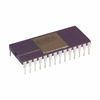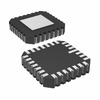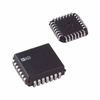Manufacturer Part Number
AD574ALNZ
Manufacturer
analog-devices
Introduction
The AD574ALNZ is a 12-bit analog-to-digital converter (ADC) from Analog Devices. It is a high-performance, low-cost ADC designed for a wide range of data acquisition and control applications. The AD574ALNZ features a successive-approximation (SAR) architecture and can operate with both internal and external reference sources.
Product Features and Performance
12-bit resolution
Single-ended input
Parallel digital output
Successive-approximation (SAR) architecture
Operates with internal or external reference
Wide supply voltage range: ±11.4V to ±16.5V analog, 5V digital
0°C to 70°C operating temperature range
28-pin DIP (0.600", 15.24mm) package
Suitable for through-hole mounting
Product Advantages
High-performance 12-bit ADC with excellent accuracy and linearity
Flexible reference options allow for optimized system design
Wide supply voltage range for compatibility with various system requirements
Compact 28-pin DIP package for easy integration
Key Reasons to Choose This Product
Reliable and well-established Analog Devices technology
Suitable for a wide range of data acquisition and control applications
Cost-effective solution for 12-bit data conversion needs
Ease of integration with through-hole mounting
Quality and Safety Features
Robust design for reliable operation
Compliance with relevant industry standards
Compatibility
The AD574ALNZ is compatible with various data acquisition and control systems that require a 12-bit ADC with a single-ended input and parallel digital output.
Application Areas
Industrial automation and control
Instrumentation and test equipment
Process control systems
Data acquisition systems
Product Lifecycle
The AD574ALNZ is an active product in our website's sales team portfolio. There are no known immediate plans for discontinuation. However, as technology advances, customers are encouraged to contact our website's sales team for the latest product information and availability of potential alternative or equivalent models.

 AD574ATDAnalog Devices Inc.IC ADC 12BIT SAR 28CDIP
AD574ATDAnalog Devices Inc.IC ADC 12BIT SAR 28CDIP AD574AJPZAnalog Devices
AD574AJPZAnalog Devices AD574ASE/883BAnalog Devices Inc.IC ADC 12BIT SAR 28LCC
AD574ASE/883BAnalog Devices Inc.IC ADC 12BIT SAR 28LCC AD574AKNAnalog Devices Inc.IC ADC 12BIT SAR 28DIP
AD574AKNAnalog Devices Inc.IC ADC 12BIT SAR 28DIP AD574AKPAnalog Devices Inc.IC ADC 12BIT SAR 28PLCC
AD574AKPAnalog Devices Inc.IC ADC 12BIT SAR 28PLCC